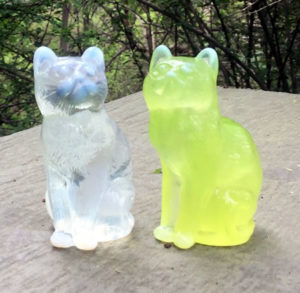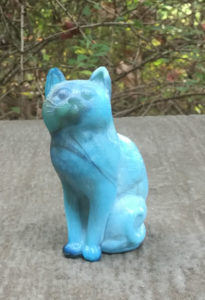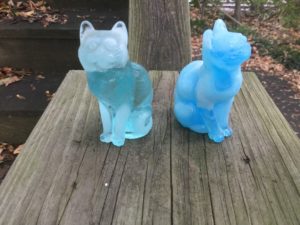New collectors are sometimes confused by the terms “opalescence” and “slag”. What do they mean and how do you distinguish them?
Opalescence refers to transluscent whitish areas around the edges of a piece of glass, like the rim of a glass or the edges of a plate. Or in this case, a glass figurine. To produce this effect, the piece is fired once and cooled slightly, then briefly reheated in the furnace again, causing heat-sensitive chemicals in the glass to turn white.

Slag glass – refers to multiple colors of glass swirled together for a marbled effect. Many people think of slag as opaque white glass, but it isn’t necessarily white. The figurine below is a slag – a combination of blue and smoky brown/black glass:

Opalescent glass can easily be differentiated from slag glass because the white is only on the surface. Slag glass would have white (or another color) swirled throughout the glass. Compare the opalescence on the head and feet of the aqua opalescent cat on the left below to the white and blue glass on the blue slag cat on the right. If you look through the base of the latter, you can see the opaque white slag mixed throughout the glass.

When discussing Mosser pieces, opalescent color names are commonly shortened to “Opal.” Mosser sitting cats in Crystal Opal and Vaseline Opal are shown at the top of this page.
